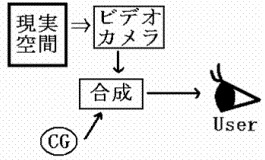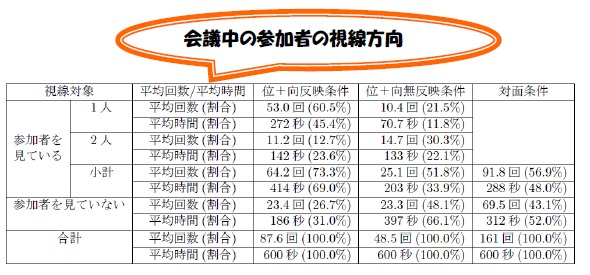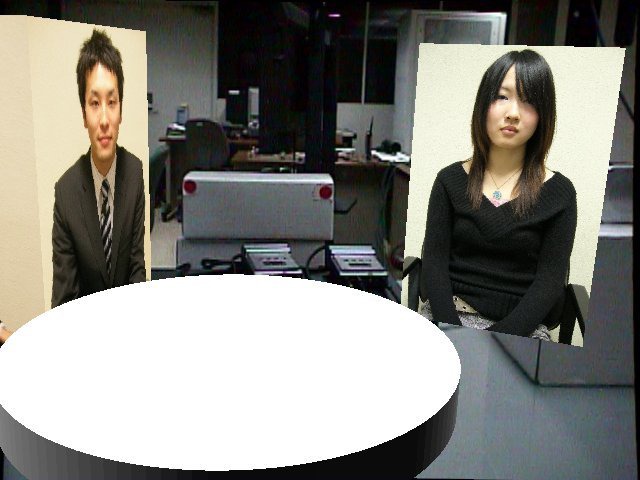Mixed reality (MR), as shown in the figure below, is a technology that synthesizes the real world and the virtual world by presenting users the image that superimposes computer graphics (CG) in the real world. Users will feel like the CG appears as it exists in the real world.

The distributed meeting can also be realized by superimposing remote meeting participants in the real world as CG avatars using mixed reality.
Recently, MR is discussed as a way to let distributed conferences become more realistic. However, how avatars should be displayed in distributed meeting is not discussed yet. While using mixed reality, unlike in the case of using virtual reality, the avaters’ sence of presence in real world becomes an issue.

Here we not only focusing on the size and the appearance design of avatars but also on the spatial design of avatars, such as the distances between avatars and their arrangement. Based on the basic experiment and meeting experiment, which focuses on the position of participants and avatars, we try to explore and improve the utility of this kind of spatial design. For example, analysis result of meeting experiment has shown that participants look more closely at individual avatars when the avatars’ positions and orientations are moving than when they are not.
References
- 井上智雄, 実対人距離を調節可能な複合現実分散会議システム, 情報処理学会論文誌, Vol.50, No.1, pp.1234-1241, 2009.
- 野口康人, 井上智雄, 複合現実感を用いた分散会議における複数アバタの配置と表現, 情報処理学会論文誌, Vol.48, No.1, pp.54-62, 2007.

